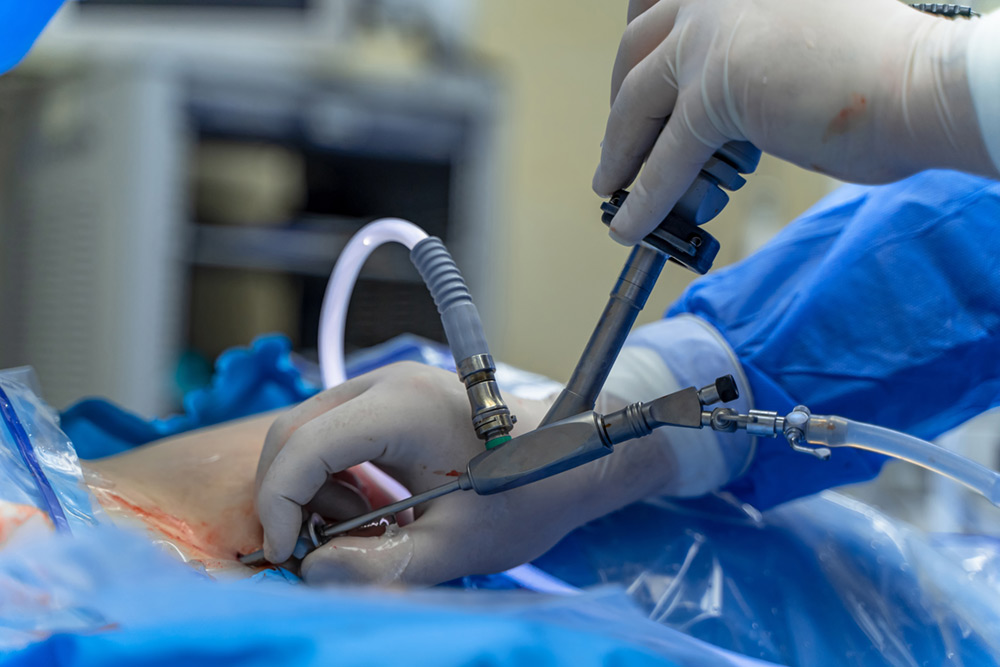The hype that surrounds laparoscopic surgery is causing many patients who will be undergoing a surgical procedure to question the need for conventional surgery. But the facts is that while the benefits of laparoscopic surgery are numerous and its range of applications is growing, it is not suitable for all procedures. It is important that patients understand the pros and cons of both, conventional and laparoscopic procedures, so that they are able to appreciate the benefits and viability of both in relation to their specific health concerns, after which they can discuss the matter clearly with their surgeons.
What Is Conventional (Open) Surgery?
Here, a large incision is made to allow the surgeon access to the tissue or organs that need to be repaired or replaced. It is often used in cases of organ removal or replacement, or where 2 structures need to be joined.
What Is Laparoscopic Surgery?
This is also known as minimally invasive surgery (a term that is self-explanatory). Only small incisions are made to the surgical area and the surgeon uses minute video cameras and special surgical tools to perform the procedure with minimal trauma.
The Procedure
For the Surgeon
Scarring
Recovery
Suitability
Benefits
Disadvantages
The viability and advantages of a specific type of surgery can only be decided upon by a surgeon. That said, it is also important that the patients understand why a particular procedure has been chosen and are comfortable with it. A patient who understands the procedure, why it is being done and the benefits of it will be in the best mental and emotional state to have the best possible recovery. While the publicity given to laparoscopic surgery often causes patients to express a preference for this type of procedure, it is not a decision that he or she can make. Only the doctors and surgeons have the knowledge and experience needed to make a decision that will be in the best interest of the patient. While patients have a right to ask questions, the decision on the procedure to be used must be made by the surgeon. In case both options are viable, the surgeon will help the patient make the right decision.
Having confidence in the doctors, surgeons and the hospital where the surgery is being done is where the treatment begins. That is why a highly reputed multispecialty hospital is the best choice. Not only will the best surgeons, technology, equipment and support staff be available, but it is also where other medical specializations will be readily available if they are required. It is often the case that a patient undergoing surgery, or any form of medical treatment, has other health issues that need to be addressed to achieve a holistic cure. At a multispecialty hospital, a wide range of highly skilled specialists will be available on site to provide any additional treatment that may be needed.
Why choose minimally invasive surgeries over open surgeries?
FAQs on Choosing Between Laparoscopic and Conventional Surgery
- What is the main difference between laparoscopic and conventional (open) surgery?
The main difference lies in the size of the incision and the surgical approach.
- Conventional (open) surgery requires a large incision for direct access to organs.
- Laparoscopic surgery, also called minimally invasive surgery, uses small incisions with a camera and specialized instruments to perform the operation with less trauma.
- Is laparoscopic surgery safer than open surgery?
In most cases, laparoscopic surgery is considered safer because it involves smaller incisions, less blood loss, reduced infection risk, and faster recovery. However, for complex or emergency surgeries, open surgery may be safer as it allows direct access and tactile control for the surgeon.
- Can all types of surgeries be done laparoscopically?
No. While the use of laparoscopic surgery is expanding, not all surgeries are suitable for this method. Conditions involving extensive tissue damage, large tumors, severe infections, or organ transplants often require open surgery. The final decision depends on the surgeon’s evaluation of the patient’s condition and anatomy. - What are the main benefits of laparoscopic surgery for patients?
Laparoscopic procedures offer multiple patient benefits:
- Smaller scars and better cosmetic results
- Less postoperative pain and lower infection risk
- Shorter hospital stay and faster recovery time
- Reduced trauma to surrounding tissues
- How long does recovery take after laparoscopic surgery?
Recovery from laparoscopic surgery is typically faster than open surgery. Most patients can resume normal activities within 1–2 weeks, depending on the type of procedure. Open surgery may require 4–6 weeks or more for full recovery.
- Are laparoscopic surgeries more expensive than open surgeries?
Initially, laparoscopic surgeries can seem slightly more expensive due to specialized instruments and camera systems. However, the shorter hospital stay, faster recovery, and reduced postoperative care often make it more cost-effective overall.


